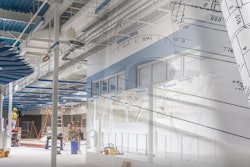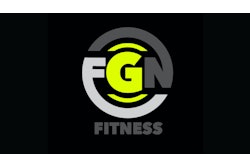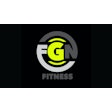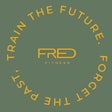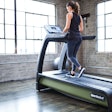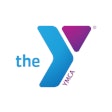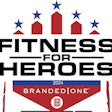Fitness assessments allow you to establish a relationship with members, help them to meet their fitness goals and introduce them to other facility services. These all contribute to more satisfied members, and better retention numbers.
Assessing members' fitness and health is standard practice in fitness centers. Typical components of fitness assessments include height and weight, body composition, flexibility, muscular strength and endurance, girth measurements, resting heart rate and aerobic fitness. Over the years, these components have not changed, largely because the science on which they are based has not changed. However, the technology for collecting, analyzing and presenting the data continues to advance. These advancements in technology can help you measure and track members' results, which can keep them motivated and help to retain them as members.
Technology can be fun
New technology can create a fun experience for members, providing user-friendly, interactive screens, and colorful, informative printed summaries. Fitness assessments have evolved from something dreaded by the deconditioned, sedentary and uninitiated exerciser, to an experience that serves to educate, offer solutions and connect the recipients to programs and services that offer them their best chance for success. Rather than making people feel bad because they may be out of shape, assessments today offer hope for long-term success.Building rapport
Delivering fitness assessments requires a private, quiet space where members feel comfortable sharing personal information. The fitness professional's ability to listen, understand and empathize with the member is paramount. The length of time required to complete an assessment allows trainers time to develop a working rapport with the member. Also, the comprehensive and technical approach helps to establish the trainer's credibility. Finally, the information members take away from the session may likely be something they have never received before. "This just adds to our credibility, and [can] lead to increased member retention," says Julie Lincoln, director of wellness and fitness of Big Vanilla Athletic Club in Arnold, Md.
Web-Based TechnologiesWeb-based technology allows information collected in the fitness center to be viewed and analyzed in an individual's home or office. This capability allows fitness centers to extend the reach of their programs to people who don't have easy access to fitness centers, or to infrequent facility users. This can offer privacy and a feeling of anonymity to those who are uncomfortable or unable to participate in programs offered at the fitness center. It can open the door for fitness professionals to be able to manage clients remotely through phone and video conferencing, and email.The capability also exists via the web for individuals to complete health assessments (not fitness testing) in the privacy of their own home, and send the information to the fitness center. This is just another way fitness centers can reach out. |
||
Results means retention
Good rapport and credibility with the member is a winning formula for successful personal training and program sales, which results in increased retention. Results are the cornerstone of any training session. In addition to personal results, assessment software allows fitness professionals to compare the results of subgroups of people. Results can show the improvement percentages seen in aerobic fitness, body composition and strength among members who choose to work out on their own versus percentages realized by members who invest in personal training. These comparisons provide objective data to tout the benefits of a structured program.Connecting members to programs
"At the conclusions of a fitness assessment, we talk with the member about their results, then offer solutions," Lincoln says. "[W]e use the fitness assessment to sell personal training. And members [who] do not want to purchase personal training are invited to attend special introductory group exercise classes." Angela Campbell, fitness director of Big Vanilla Club, adds, "All new members go through 'Big V Basics,' which consists of a fitness assessment, a 30-minute orientation to our weight circuit, an introduction to the cardio machines and education on proper club etiquette."Scott Pullen, personal trainer and fitness and nutrition program coordinator for the National Academy of Sports Medicine (NASM), Calabasas, Calif., says, "Fitness assessments accomplish two things: 1) they provide a good service that allows trainers to meet new members, and 2) they are a tool to sell personal training and other programs that generate non-dues revenues."
Pullen, Lincoln and Campbell all offer complimentary monthly workout program updates to members who choose not to invest in personal training, along with follow-up assessments. They all believe that providing this service leads to higher facility usage among these members, and strengthens the rapport they work hard to establish. "Usually in the second fitness assessment, members who are not working with a trainer see no change in their numbers - which frustrates them because they say they were working out regularly," Pullen says. "This allows me to offer personal training services again." Because of the good rapport he has established through the entire process, he feels he can be direct with the member in a professional manner.
Julie McNaney, program director of Navy Federal Credit Union Fitness Center in Vienna, Va., agrees with Pullen. "The first assessment provides a baseline," she says. "The second assessment allows them to see their improvements on paper. This motivates the member to stick with their program, or to seek help if the results were less than what they expected."
In addition to "typical" members, fitness assessments allow for the identification of individuals who may be at risk for disease and disability. Specialized programs can be implemented for these individuals. Low-users, those statistically at highest risk for quitting the fitness center, can also be identified and engaged.
Types of assessments
Movement screens. Movement screens provide feedback on an individual's functional status. At The Bel Air Athletic Club (WellBridge) in Bel Air, Md., Athletic Director Brian Price and his team use this to expand the fitness assessment. "We use the NASM overhead squat movement screen in addition to goal setting and basic measures," he says. "Fitness assessment results are ... a motivator to the members to comply with their programs. [Specifically, movement screens] ... are a tool to supplement the member's experience, and provide the trainer with additional information to ensure the member receives the best program possible."Price cautions trainers about reading too much into movement screens. "Suddenly, we've become physiological experts," he says. "The movement screens should be used as a tool. They were developed by a physical therapist who really knows how to interpret the results. But, a new personal trainer with an entry level certification can't interpret the results accurately. Inaccurate interpretation of results is a disservice to clients."
Metabolic testing. The newest technology to emerge in fitness centers is metabolic testing, which measures resting metabolic rate (RMR) (the number of calories a person will expend in a day while at rest) and volume of oxygen (VO2), which determines aerobic fitness. In the recent past, VO2 testing could only be delivered in universities, hospitals and professional training centers because of the complexities and high expense of the equipment. But, like most technology, components get smaller, less complex and cheaper each year. There are now several companies that market this technology to fitness centers.
Body composition. Body composition testing, combined with metabolic testing, can help fitness professionals design programs that provide more accurate calorie balancing (calories in versus calories out). This maximizes the member's success. Nothing is more exciting to members than achieving their goals, especially if they are weight-loss goals. Not only do they look great, but they feel great, too. And that translates to an increase in the perceived value of their membership, resulting in increased retention. It can also lead to an increase in membership referrals. Healthy, happy members are a fitness center's best sales tool.



















